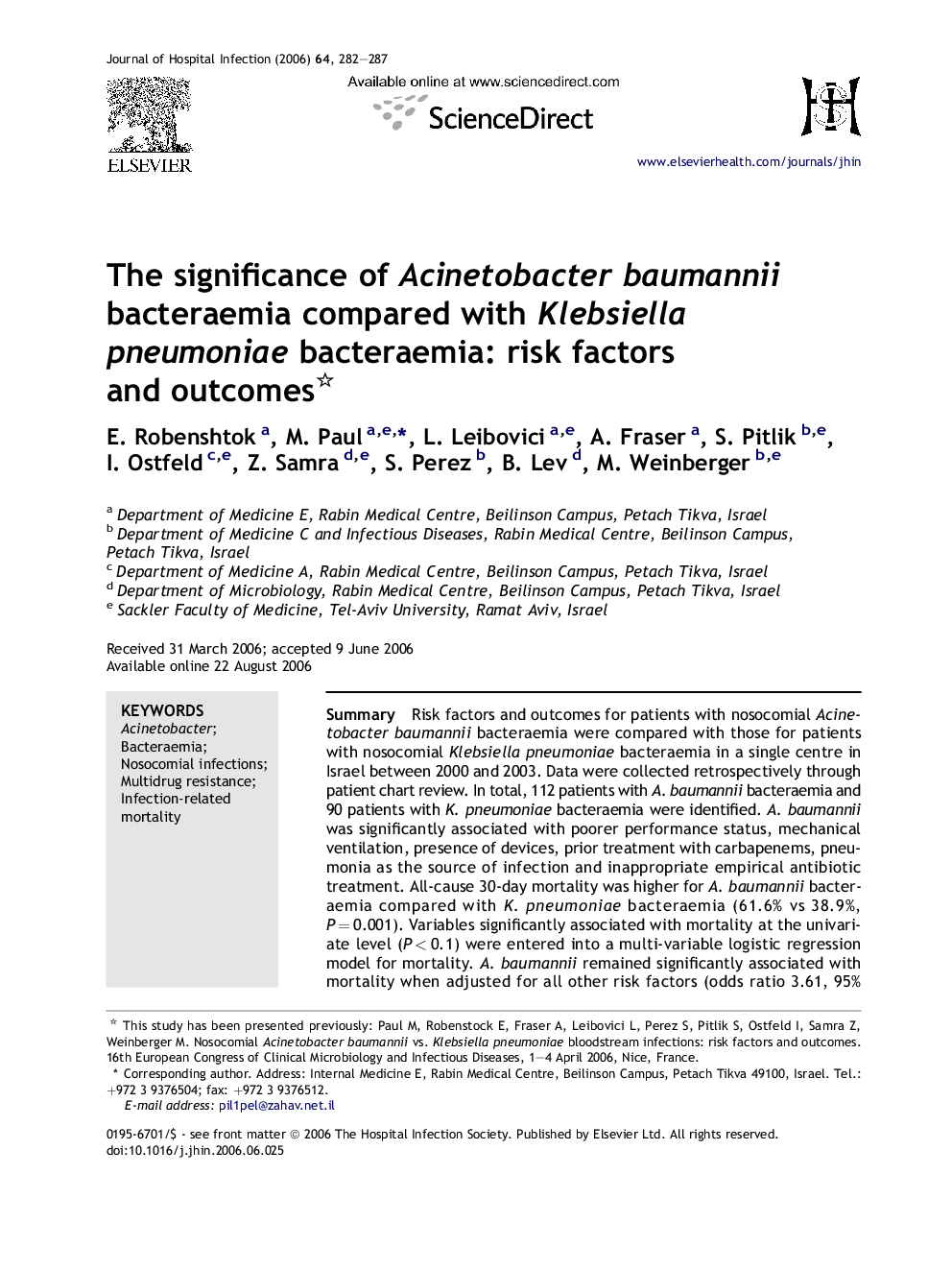| Article ID | Journal | Published Year | Pages | File Type |
|---|---|---|---|---|
| 3374057 | Journal of Hospital Infection | 2006 | 6 Pages |
SummaryRisk factors and outcomes for patients with nosocomial Acinetobacter baumannii bacteraemia were compared with those for patients with nosocomial Klebsiella pneumoniae bacteraemia in a single centre in Israel between 2000 and 2003. Data were collected retrospectively through patient chart review. In total, 112 patients with A. baumannii bacteraemia and 90 patients with K. pneumoniae bacteraemia were identified. A. baumannii was significantly associated with poorer performance status, mechanical ventilation, presence of devices, prior treatment with carbapenems, pneumonia as the source of infection and inappropriate empirical antibiotic treatment. All-cause 30-day mortality was higher for A. baumannii bacteraemia compared with K. pneumoniae bacteraemia (61.6% vs 38.9%, P = 0.001). Variables significantly associated with mortality at the univariate level (P < 0.1) were entered into a multi-variable logistic regression model for mortality. A. baumannii remained significantly associated with mortality when adjusted for all other risk factors (odds ratio 3.61, 95% confidence interval 1.55–8.39). This result did not change when the analysis was repeated for subgroups of less severely ill patients, i.e. those who were not ventilated and those who did not present with septic shock. These results support the view that nosocomial bacteraemia due to A. baumannii is associated with increased mortality.
